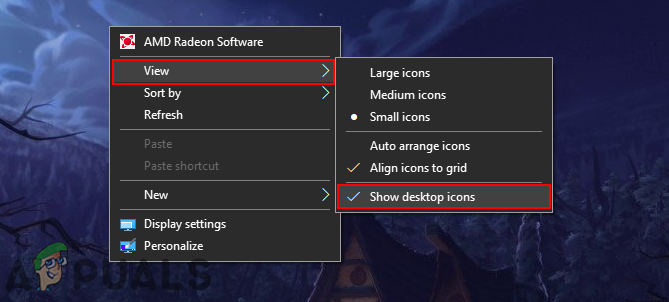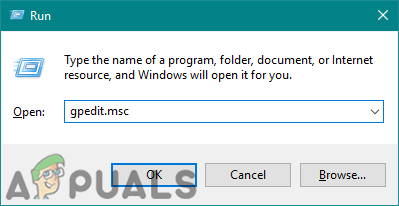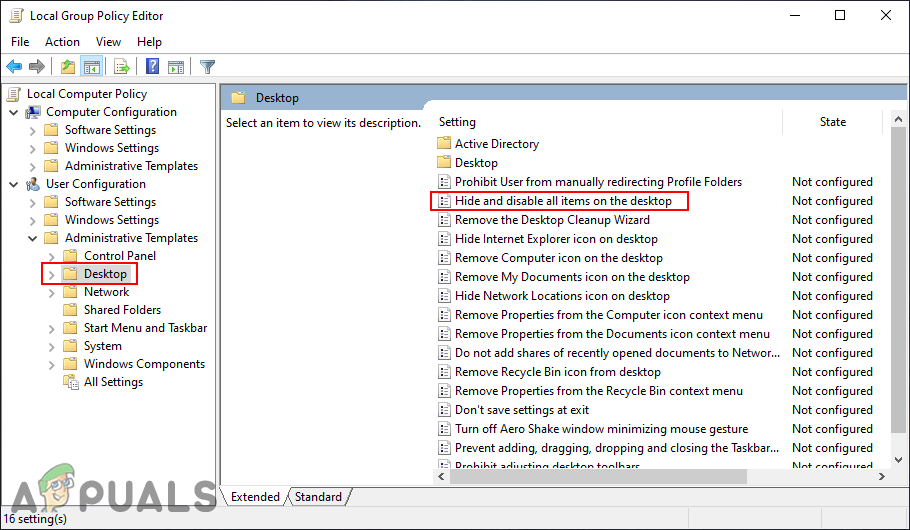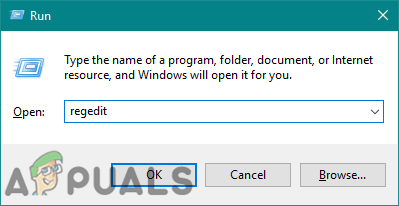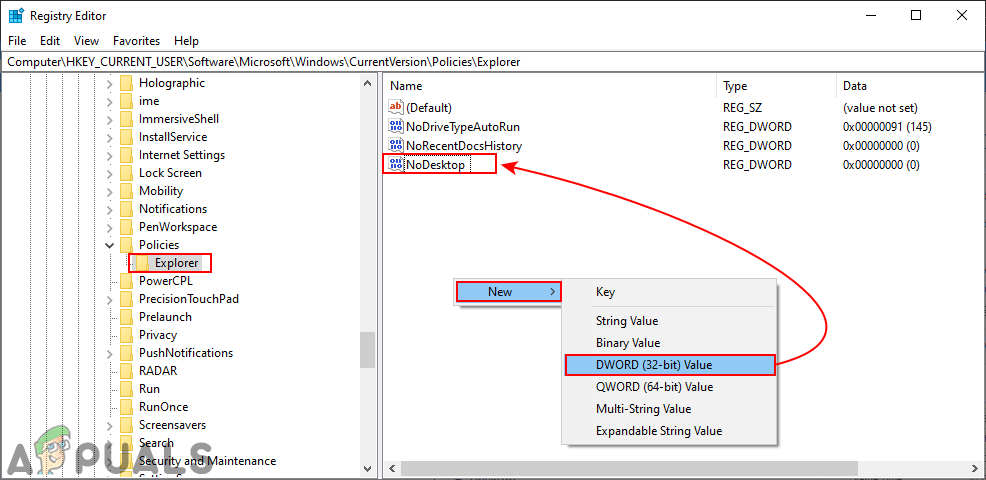Hiding and Disabling All Items on the Desktop
There are several methods through which you can hide and disable all the items on the desktop. The easiest and default method will be through the context menu. This is best used when you want to temporarily hide the icons for a screenshot or recording screen. It requires two clicks to hide and unhide it back pretty quickly. The other methods are used when the administrator wants to keep the desktop clean. The users will also be unable to right-click on the desktop through these methods. Depending on what you want to achieve by hiding the icons on the desktop, choose the method below that is best for you.
Method 1: Using the Desktop’s Context Menu
This is the most common and the default method for hiding icons on the desktop. Just right-click anywhere on the desktop, choose View and then click on Show desktop icons. This will hide all the icons on the desktop. You can also unhide the icons again by clicking on the same Show desktop icons option.
Method 2: Using the Local Group Policy Editor
The Local Group Policy Editor is a Windows feature through which users can manage and configure the Windows operating system. Administrators can use the Group Policy Editor to allow or prevent many different settings for Windows. The policy setting that hides or disable the desktop icons can be found in the user category of Group Policy Editor. By enabling this policy all the icons will disappear and users will be unable to right-click on the desktop. However, the Local Group Policy Editor isn’t available in the Windows Home Editions. If you are using Home Edition Window, then skip this method and try the Registry Editor Method. If you have the Local Group Policy Editor on your system, then follow the below guide:
Method 3: Using the Registry Editor
The Registry Editor method works the same as the Local Group Policy Editor method. Any changes done through the Local Group Policy Editor will automatically update the same setting in the Registry Editor. Some of the values of the key will be missing and the users are required to create them manually to make it work. This method also hides all items and disable the right-click on the desktop. Follow the below steps to try it out:
How to Hide/Show Specific Control Panel Items in Windows 10?How to Start Cleanmgr (Disk Cleanup) with All Items CheckedHow to Enable or Disable Startup Items in Windows 10How to Enable or Disable Check Boxes to Select Items in Windows 11

